The second book I bought at the Eden Project is the sort of book you might like to have to hand when put on hold on the phone, while stirring a white sauce or while waiting for other members of the family to get ready to go out (though, in truth I am the one who needs waiting for – but you might not be). Chris Bearsdhaw’s 100 Plants that almost changed the world (pub: Papadakis 2013) is at first glance one of those books that appears to say ‘read me, I’m cute’ and over which my gaze and hovering fingers would pass without deviation. But I did stop and pick it up, quite liked the art work (Monty Python meets botanical illustration) and enjoyed the entries.
Doesn’t it always happen that someone mentions something interesting which you remember knowing about in the dim and distant past (little more than a week for me) and then blow me, if you don’t immediately find another reference to it (and often another and another, as if you can;t get away from it)? Well, whilst bouncing over the more boring bits of inland Cornwall from St Austell to St Ives, on our way back from the Eden Project, conversation had turned to nutmeg and specifically the nutmeg wars of the C16-C17th which became focused on the Isle of Run (sometimes spelt Rhun). And wouldn’t you know it, when tucked up in our fisherman’s cottage and I opened my new books, I found nutmeg was indeed one of ‘the 100 plants that almost changed the world’.
However, the entry on nutmeg was superficial and brief (true of all the entries) and concentrating on the genocide of the local population at the hand of Dutch East India Company had left the story of Run hanging at that point. But the nutmeg wars continued on and off for more than 50 years and at their close led to an exchange of colonial lands that make it clear that nutmeg DID change the world. Let me briefly outline what happened.
Originally, the most commercially important species of nutmeg came only from the Spice Islands of Indonesia, and more specifically from the Banda Islands, 11 small volcanic outcrops, one of which, Run(or Rhun) was particularly blessed with the plant. The Portuguese were the first to trade with the islands in nutmeg but, never establishing a land base, were unable to control the trade. The Dutch East India Company (VOC) saw the Portuguese off and, wanting nothing less a monopoly in the spice made terrible war on the Banda Islanders, killing and enslaving over 90% of the population. Run, however, had been difficult to subdue and success here fell to the British who made a deal to buy all the island’s nutmeg production in exchange for protecting Run against Dutch aggression.
In fact, Run, (in 1616, I think) became the first overseas British colony. In 1667, at the Treaty of Breda, some 50 years later, the British negotiated the exchange of Run for Manhattan. So, New Amsterdam became New York, all for a few sacks of nutmeg which by this time anyway the British and the French had been growing successfully elsewhere. (It is strange that Beardshaw’s book omits the coda about how the British got their hands on Manhattan, although, to be fair it has to be said that the circumstances around the giving up of Manhattan were very much more complicated than a straightforward swop.)
But my nutmeg connections were not yet finished for on our bookshelves is Giles Milton’s ‘Nathaniel’s Nutmeg’, a wonderful accessible narrative history (and bestseller in 1999) looking at the English adventure on Run in detail through the eyes of Nathaniel Courthope as he negotiated with head hunters and cannibals and with a minute force staved off Dutch forces 100 times greater than his own. In truth Nathaniel Courthorpe only occupies a little more that a tenth of the book (towards the end) and in fact he only kept the Dutch off for five years until he was ambushed and killed. But Milton has researched his subject well and the first part of the book is a rollocking read devoted to the early voyages of discovery and the quite dreadful conditions on those boats buffeting their way to the Spice Islands. I rather like this sort of history book – and have enjoyed other similar books by Giles Milton. It is, however, appalling that, having had it read to me (while sewing) nearly 10 years ago, it took me several hours after our conversation about Run to remember I’d read a whole book based on the island’s story!
You’ll no doubt be relieved to know that these are the last of my embroidered patchwork stars. Next week, it will be back to showing you more flowers embroidered for the altar frontal work on which continues feverishly as we countdown the days to our last month here. (We do have a month’s grace after that before we have to be out of the vicarage, but I would like to finish the altar frontal sooner, rather than later.)

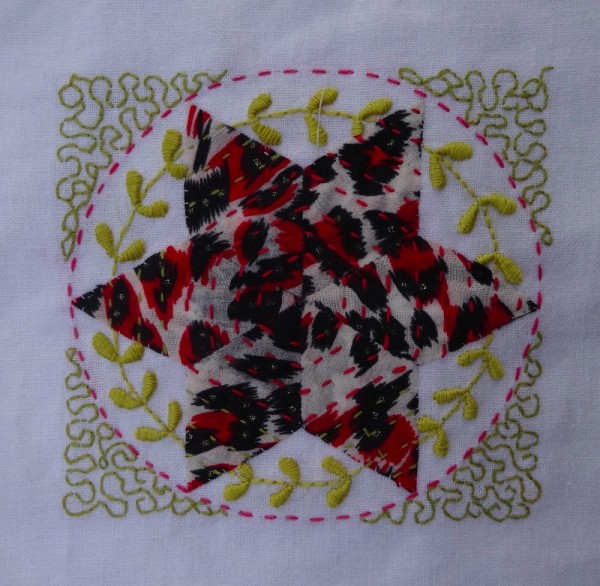
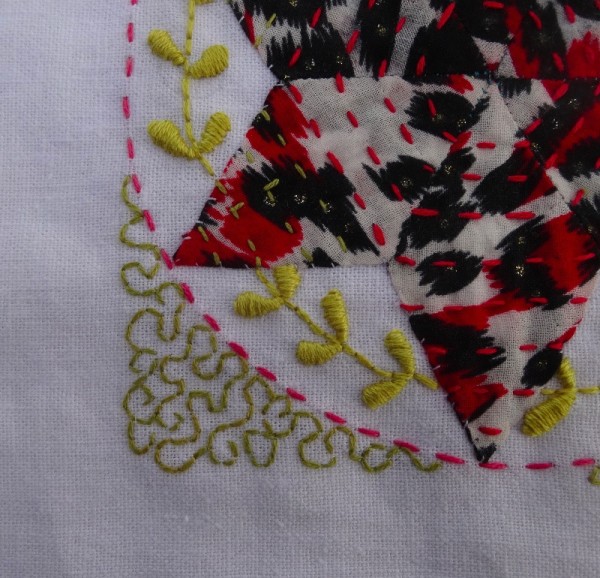
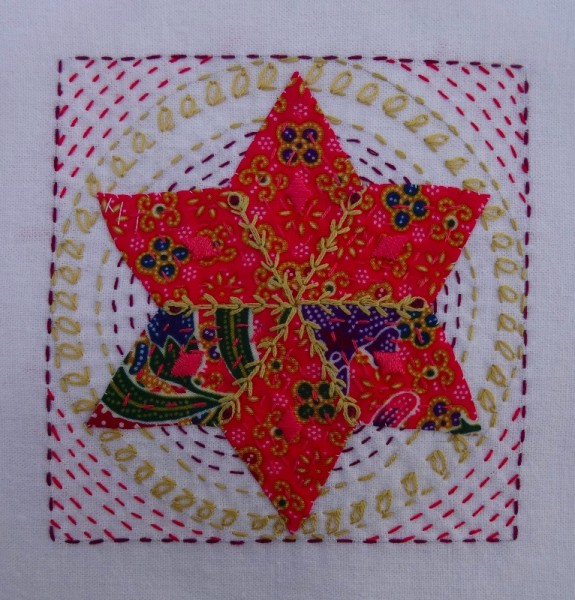
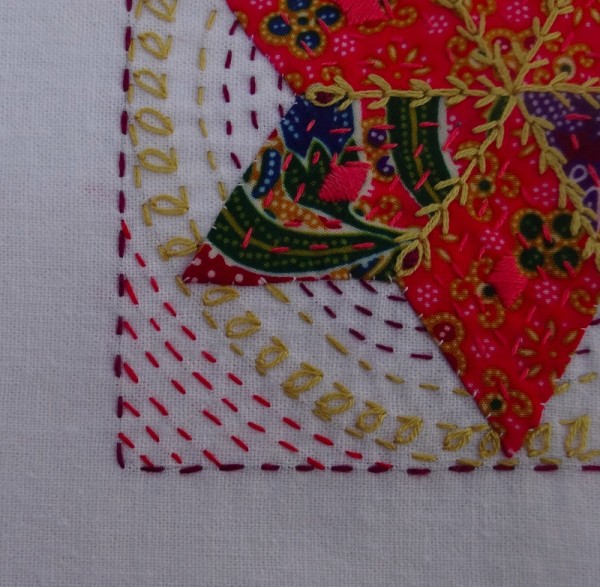
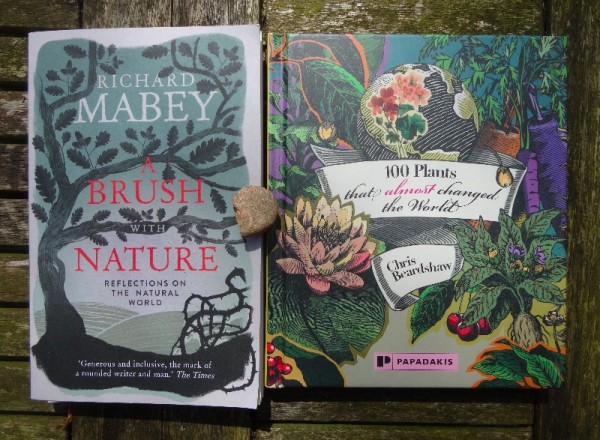
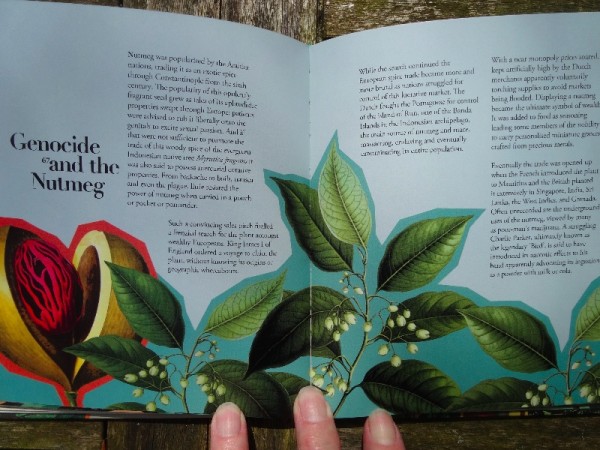
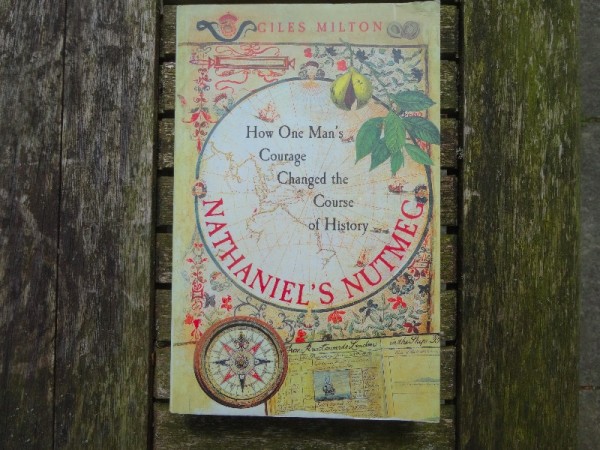
8 Comments
Good luck with your deadline!
However interesting a book is, sometimes it takes a while for the memories to come out of long-term storage…
And it is strange what triggers those long held but seemingly lost memories back to the surface – surely one of the joys of getting older.
I do hate that about myself too. I wish I remembered all the things I’ve learned, sometimes two or three times over.
The reverse of that can be a joy when things come at you from a surprising angle and you discover that you have remembered something you thought you’d forgotten – if you see what I mean!
I can read something, be wildly fascinated by it, and forget it within the day. Awful. Memory is a slippery fish for sure X
That’s why we have to talk about what we read which files things in mind in a different and probably additional way – more change of bits of ideas bumping into other bits and triggering a memory – she said in a stupendously uninformed way.
I love the aroma of nutmeg, reminds me of rice pudding when I was very young. I still love rice pudding. How many wonders we take for granted as we lift them off the supermarket shelf, how times change don’t they?
Richard Mabey’s book looks interesting… I am still reading Wolf Hall though, and what a great read I am finding it. Did Henry VIII have access to nutmeg I wonder, I imagine he would have loved it.
Yes, Lydia, things formerly exotic – in all meanings of the word, are now only a supermarket shelf away. Sometimes rediscovering their origins and history actually makes me look at them afresh and love them a bit more. Egg custard with nutmeg is a great favourite with my husband (as it was with my father) but I rarely make it so the poor man has to buy custard tarts in shops whenever he sees them!
I too love Wold Hall (and posted on Hilary Mantel’s striking use of textiles and clothing – http://www.addisonembroideryatthevicarage.co.uk/2015/03/07/wolf-hall-told-clothes/ – you might like to have another look when you’ve finished the book, as I see you left a comment when first you read it!